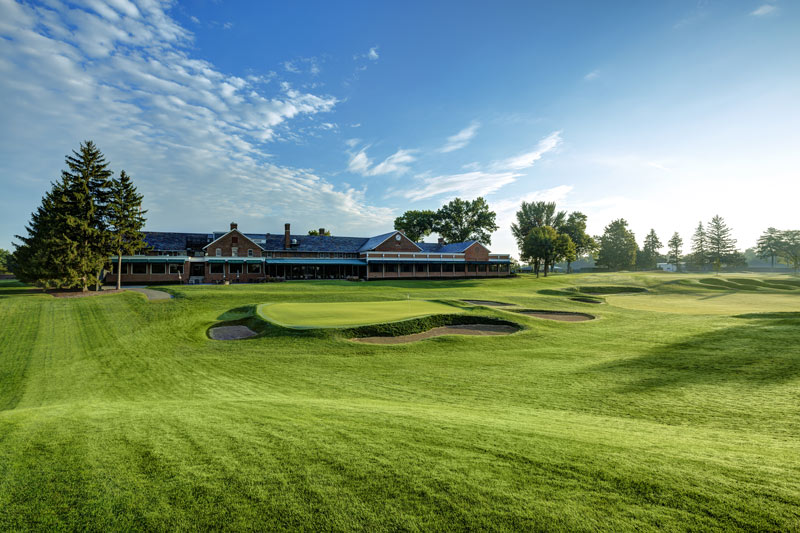
Opened in 1903, Inverness Club has been the site of eleven championships, including four U.S. Opens and two PGA Championships. Photo courtesy of Inverness Club
This is right in your wheelhouse, John Zimmers.
The historic Inverness Club in Toledo, Ohio, publicly announced on Monday that it has implemented a master plan aimed at restoring long-lost features at the famed golf course. In fact, the work began June 2 and is expected to be completed next spring. In the meantime, members are being allowed to play. Zimmers, the GCSAA Class A superintendent who arrived earlier this year after a long run at another historic golf course, Oakmont (Pa.) Country Club, is thrilled at the opportunity to be part of it.
“The club is really committed to restoring it to the early Ross years,” Zimmers, a 25-year association member, tells GCM, referring to Donald Ross, the iconic architect. “Part of what we are doing is tree removal, which is right up my alley.”
Before Oakmont hosted the 2016 U.S. Open, a key element of its restoration was the removal of about 7,500 trees between 2007 and the U.S. Open nine years later. Zimmers says tree removal won’t be equally extensive at Inverness, but he still has multiple tasks. Architect Andrew Green was chosen to handle the blueprint for the restoration, which will be overseen by Zimmers, who has experience at this. He was the grow-in superintendent at Sand Ridge Golf Club (now called Mayfield Sand Ridge) in South Euclid, Ohio. His background is comforting to Inverness general manager Joe Furko.
“His expertise and knowledge makes this easier for everybody. John has the foresight, the vision, which also saves money and time,” Furko says.
The Inverness restoration includes new championship tees, enabling the course to adjust to the impact of modern technology. Inverness will be stretched to almost 7,700 yards and remain a par 71. “This was done with the membership in mind,” Furko says. “The game has changed so much. Our members can hit it over some of the bunkers.”
Some of those bunkers will be rebuilt and, in some instances, relocated. Putting green expansions are planned, which will help recover hole locations lost throughout the years. Ross’ signature hummocks are being enhanced and expanded as a low-maintenance defense against wayward shots. Two lost Ross par 3s are being recreated in their entirety, and putting greens from two lost Ross par 4s are incorporated into the design of a new par 4 and a revised par 5. Green used Ross’ original drawings, notes made from the 1931 U.S. Open, and a trove of pictures from Inverness and the USGA’s archives to find inspiration for the course updates.
This, however, isn’t the first renovation done at Inverness; the course remained largely unchanged until preparations for the 1979 U.S. Open, when George and Tom Fazio were hired to lengthen the course and improve spectator movement.
“It is a unique piece of property for Ohio,” Zimmers says. “Ups, downs and valleys. In the Toledo area, there’s not anything quite like this. And it gets windy here. The course is going to have some teeth to it.”
Inverness Club, which has hosted four U.S. Opens, two PGA Championships and two U.S. Senior Opens, will host the U.S. Junior Amateur in 2019 and the Solheim Cup in 2021.
Howard Richman is GCM’s associate editor.